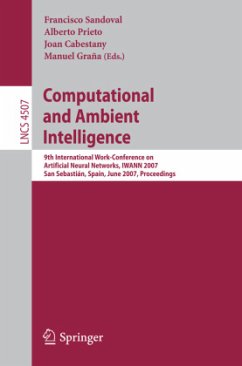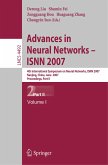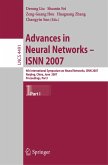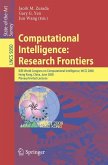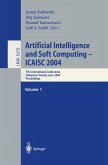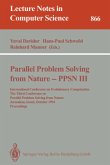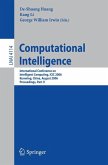This book constitutes the refereed proceedings of the 9th International Work-Conference on Artificial Neural Networks, IWANN 2007, held in San Sebastián, Spain in June 2007. Coverage includes theoretical concepts and neurocomputational formulations, evolutionary and genetic algorithms, data analysis, signal processing, robotics and planning motor control, as well as neural networks and other machine learning methods in cancer research.
We present in this volume the collection of finally accepted papers for the ninth e- tion of the IWANN conference ("International Work-Conference on Artificial Neural Networks"). This biennial meeting focuses on the foundations, theory, models and applications of systems inspired by nature (neural networks, fuzzy logic and evo- tionary systems). Since the first edition of IWANN in Granada (LNCS 540, 1991), the computational intelligence community and the domain itself have matured and evolved. Under the computational intelligent banner we find a very heterogeneous scenario with a main interest and objective: to better understand nature and natural entities for the correct elaboration of theories, models and new algorithms. For scientifics, engineers and professionals working in the area, this is a very good way to get real, solid and c- petitive applications. More and more, these new computational techniques are used in applications that try to bring a new situation of well-beingto the user. The conjunction of a more and more miniaturized hardware together with the growing computational intelligence embodied in this hardware leads us towards fully integrated embedded systems-on- chip and opens the door for truly ubiquitous electronics.
We present in this volume the collection of finally accepted papers for the ninth e- tion of the IWANN conference ("International Work-Conference on Artificial Neural Networks"). This biennial meeting focuses on the foundations, theory, models and applications of systems inspired by nature (neural networks, fuzzy logic and evo- tionary systems). Since the first edition of IWANN in Granada (LNCS 540, 1991), the computational intelligence community and the domain itself have matured and evolved. Under the computational intelligent banner we find a very heterogeneous scenario with a main interest and objective: to better understand nature and natural entities for the correct elaboration of theories, models and new algorithms. For scientifics, engineers and professionals working in the area, this is a very good way to get real, solid and c- petitive applications. More and more, these new computational techniques are used in applications that try to bring a new situation of well-beingto the user. The conjunction of a more and more miniaturized hardware together with the growing computational intelligence embodied in this hardware leads us towards fully integrated embedded systems-on- chip and opens the door for truly ubiquitous electronics.

